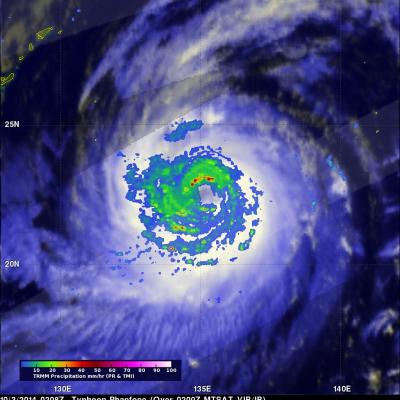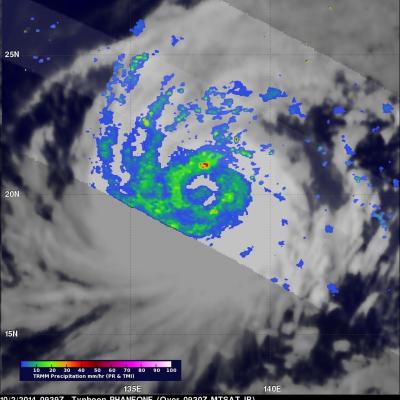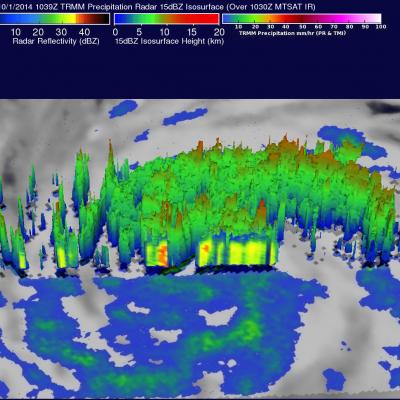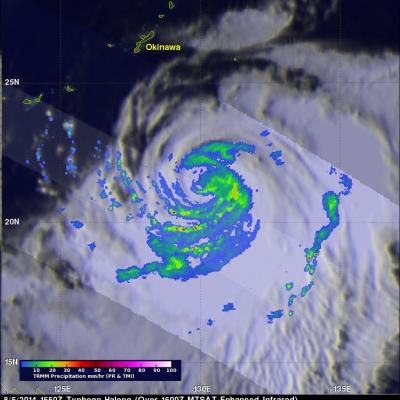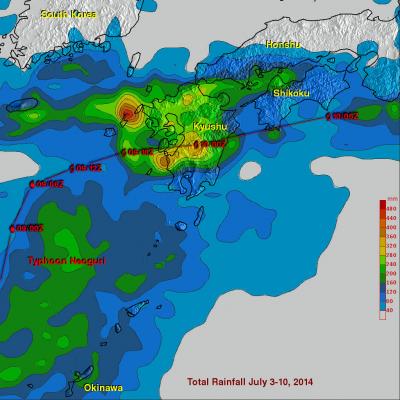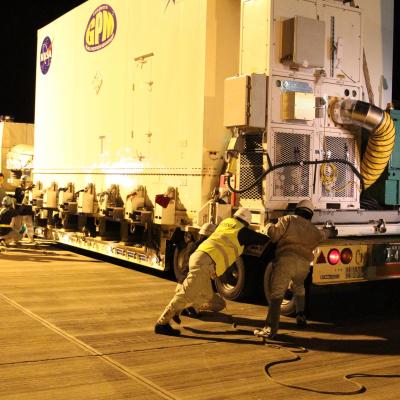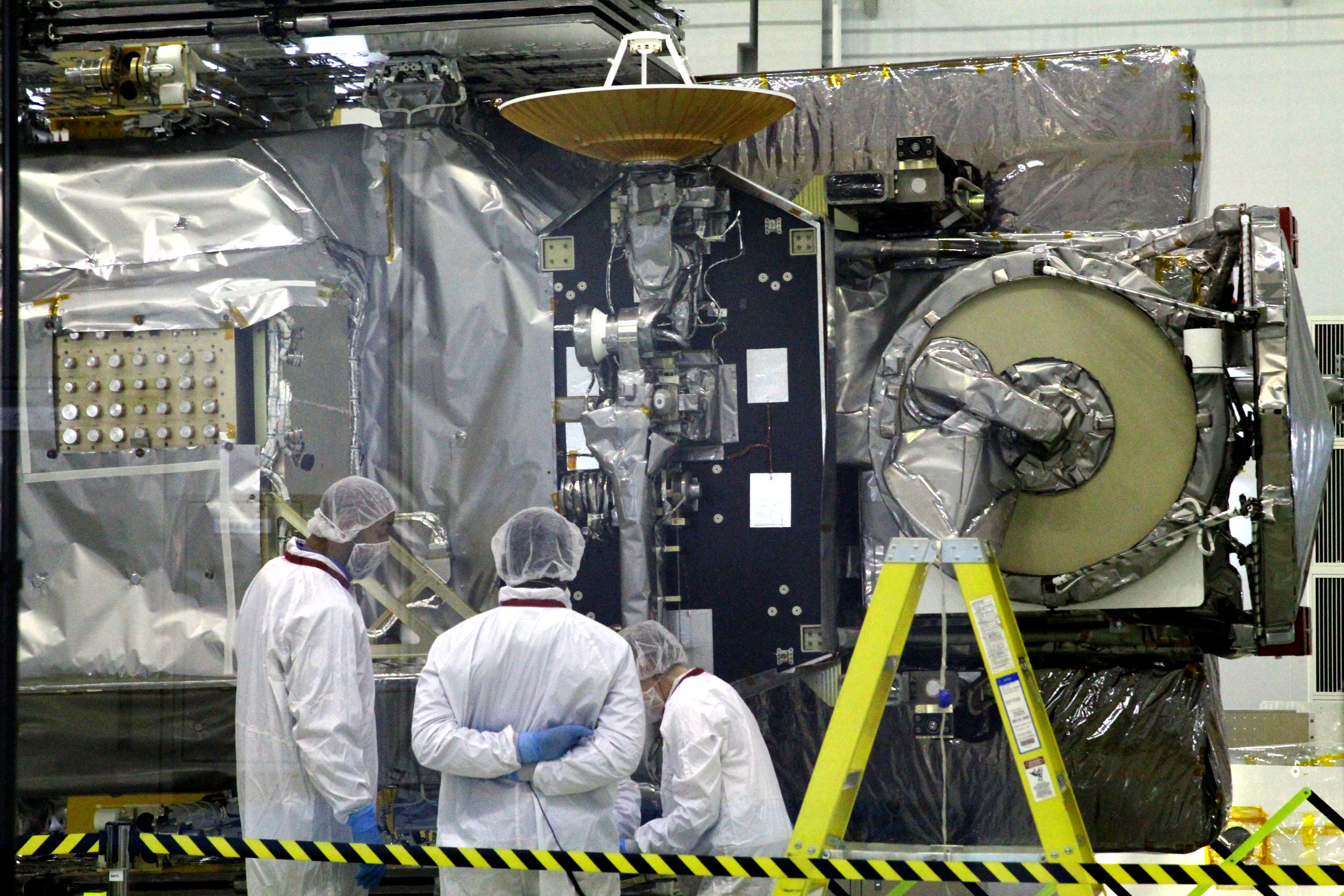Powerful Typhoon Phanfone
Typhoon Phanfone had sustained wind speeds of about 110 kts (127 mph) and a well defined eye when the TRMM satellite passed over on October 3, 2014 at 0208 UTC. Microwave Imager (TMI) and Precipitation Radar (PR) measurements showed that Phanfone's eye wall and strong feeder bands contained rain frequently falling at a rate of over 60 mm (2.4 inches) per hour. Typhoon Phanfone's wind speeds were predicted today by the Joint Typhoon Warning Center (JTWC) to peak at 120 kts (138 mph) on October 4, 2014 0600 UTC. As a weakening typhoon, Phanfone's course is predicted to change from north


